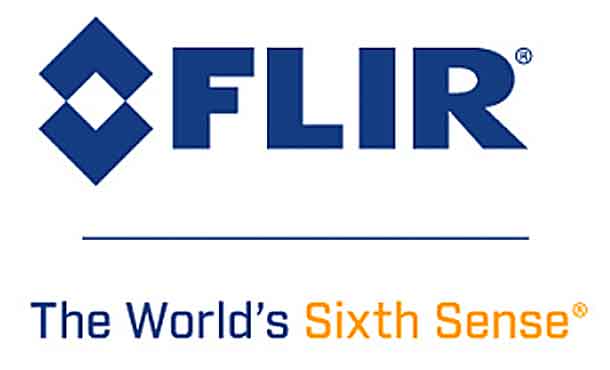
By Philip Tackett, Ph.D. Product Manager, Detection FLIR Systems, Inc.
Clandestine drug labs are not a new problem for responders, but they are growing in number and present potentially dangerous crime scenes.
One of the greatest opioid threats facing responders today is fentanyl.
Portable gas chromatography mass spectrometry (GC/MS) equipment can help hazardous materials (HAZMAT) response teams quickly identify white powders, like fentanyl, and associated cutting agents on-scene.
(Learn More. Opioids are a very serious exposure threat in the workplace, for first responders and even drug detection K-9s. This FLIR PRIMED episode delivers critical steps responders can take for protection when responding to opioid incidents. Courtesy of FLIR Systems and YouTube. Posted on Feb 26, 2018)
FENTANYL CHEMICAL RELEVANCE
Opioids are medically used for pain relief.
One of the most common opioids is fentanyl (N-(1-(2-phenethyl)-4-piperidinyl-N-phenyl-propanamide), the effects of which are similar to heroin.1
Fentanyl is listed as a Schedule II drug under the United States Code (USC) Title 21 Controlled Substance Act and is also controlled internationally under Schedule I of the Single Convention on Narcotic Drugs of 1961.2,3
(Learn More as MSNBC examines the cause of the deadliest drug crisis in American history. Courtesy of MSNBC and YouTube. Posted on Nov 9, 2017)
It is a favored painkiller because it is fast-acting.
According to the Centers for Disease Control and Prevention (CDC), fentanyl is up to 100 times more potent than morphine and many times that of heroin.
In the 1980s, fentanyl became infamous as a street drug.
By the 2000s, drug dealers began adding fentanyl to heroin to create an even more intense high that onsets very quickly.5
Misuse is on a significant rise due to the euphoric effect felt by the user. The ease of access has turned it into a global epidemic.
(Opioid overdose emergency department visits rose 30% in all parts of the U.S. from July 2016 through September 2017. Courtesy of the Centers for Disease Control and Prevention (CDC) and YouTube. Posted on Mar 6, 2018)
Because of its high potency and the fact that users don’t know how much to administer, fentanyl has led to a significant surge in overdose deaths.
According to the CDC, “Overdose deaths involving synthetic opioids other than methadone, which includes fentanyl, increased by 72% from 2014 to 2015.
Roughly 9,500 people died from overdoses involving synthetic opioids other than methadone in 2015.”6
THREAT TO FIRST RESPONDERS
Fentanyl is commonly distributed as a powder and looks similar to other illicit drugs found on the streets (Figure 1).

A person can overdose by simply touching or inhaling a small amount, presenting an incredibly dangerous threat to first responders, law enforcement officers, and even forensic chemists.
“An amount the size of a few grains of sand of fentanyl can kill you,” said Drug Enforcement Agency (DEA) Special Agent John Martin.7
If fentanyl is suspected, the DEA recommends that law enforcement officers do not field test drugs.8
Hazardous Materials Response Teams (HMRTs) should be called to assess suspected clandestine labs.
Be alert for signs and symptoms of exposure and keep Naloxone injectors on hand.
- Symptoms of exposure can include respiratory distress, disorientation, clammy skin and pinpoint pupils.
- Bag and destroy grossly contaminated clothing.
- Don’t use hand sanitizer.
- Upon return home or to the station/base, shower with soap and water.
(The Drug Enforcement Administration (DEA) has sent out an urgent alert to police, paramedics, firefighters and other first responders about the dangers of the opiate fentanyl — sounding the alarm on the potentially deadly occupational hazard, which some have already experienced. Courtesy of CBS News and YouTube. Posted on Jun 7, 2017)
CHEMICAL IDENTIFICATION USING GC/MS
HAZMAT responders must perform quickly and with limited dexterity when wearing Personal Protective Equipment (PPE).
In a clan-lab, responders are responsible for data collection, sampling, and in some cases, analysis that leads to real-time decision-making.
A GC-MS can aid responders with decision-making by delivering quick identification of illicit drugs, synthetic analogues, and associated precursors.
On-scene confirmation gives responders the actionable intelligence needed for timely law enforcement and remediation.
(No time? No lab? No problem. Quickly and easily identify chemical hazards in the field with the FLIR Griffin™ G510 portable gas chromatograph mass spectrometer (GC-MS). See it in action. Courtesy of FLIR Systems and YouTube)
On the street, heroin is commonly cut with fentanyl.
HAZMAT responders are likely to uncover both drugs in a single unknown powder sample.
GC/MS is an ideal tool for clan-lab assessments, because it can separate out multiple drugs in a single, complex sample.

One of the most common sample preparation techniques for unknown powders is a solvent extraction. This technique involves adding the powder to an organic-based solvent.
A syringe is then used to extract a very small portion of the organic-based liquid sample and inject it into the GC-MS for analysis (Figure 2).
Many chemicals can be detected and analyzed in the vapor phase, including solvents used in the production of narcotics.
Pyridine is a common solvent used in the production of fentanyl and is likely to be discovered in a clan-lab scenario.
A GC-MS can be placed into Vapor Confirmation Mode and exposed to pyridine (Figure 3).

SUMMARY
GC/MS has long played a critical role in traditional laboratory-based chemical analysis and is the gold-standard for forensic analysis.
But chemical emergencies rarely occur in the safety of a laboratory as evidenced by the rise in street drugs and clan-labs.
Chemical emergencies can happen anywhere, extending the need for GC-MS equipment beyond the lab.
Person-portable GC-MS systems provide the ability to confirm clandestine production of illicit drugs via same day analysis.
(Learn More. Unknown powders. They can be almost anything! In FLIR PRIMED episode 11, Grant covers safe scene risk assessment, what to look for, and who to call. Courtesy of FLIR Systems and YouTube)
FLIR Takes Two in the 2017 ‘ASTORS’ Homeland Security Awards Program
-
FLIR Systems
- Platinum ‘ASTORS’ Award Winner
- FLIR Griffin G510 Gas Chromatograph Mass Spectrometer (GC/MS)
- Best CBRNE Detection System
- *A 2016 ‘ASTORS’ Award Winner

-
FLIR Systems
- Gold ‘ASTORS’ Award Winner
- FLIR PRIMED Online CBRNE Training Video Series
- Best Homeland Security Education
- *A 2016 ‘ASTORS’ Award Winner

Over 100 distinguished guests from National, State and Local Governments, and Industry Leading Corporate Executives from companies allied to Government, gathered from across North America and the Middle East to be honored from disciplines across the Security Industry in their respective fields which included:
- The Department of Homeland Security
- The Department of Justice
- The Security Exchange Commission
- State and Municipal Law Enforcement Agencies
- Leaders in Private Security
Recognized for their Innovative Training and Education Programs, Outstanding Product Development Achievements and Exciting New Technologies to address the growing Homeland Security Threats our Nation is facing.
Nominations are now being accepted for the 2018 ‘ASTORS’ Homeland Security Awards at https://americansecuritytoday.com/ast-awards/.
American Security Today will be holding the 2018 ‘ASTORS’ Awards Presentation Luncheon to honor Nominees, Finalists and Winners in November 2018, in New York City.
FLIR Systems is a world-leading maker of sensor systems that enhance perception and heighten awareness, helping to save lives, improve productivity, and protect the environment.
 FLIR’s vision is to be “The World’s Sixth Sense” by leveraging thermal imaging and adjacent technologies to provide innovative, intelligent solutions for security and surveillance, environmental and condition monitoring, outdoor recreation, machine vision, navigation, and advanced threat detection.
FLIR’s vision is to be “The World’s Sixth Sense” by leveraging thermal imaging and adjacent technologies to provide innovative, intelligent solutions for security and surveillance, environmental and condition monitoring, outdoor recreation, machine vision, navigation, and advanced threat detection.
For ‘ASTORS’ Sponsorship Opportunities and More Information on the AST 2018 ‘ASTORS’ Homeland Security Awards Program, please contact Michael Madsen, AST Publisher at: mmadsen@americansecuritytoday.com or call 732.233.8119 (mobile) or 646-450-6027 (office).
SOURCES
1 Source: PubChem; URL: https://pubchem.ncbi.nlm.nih.gov; Description: Data deposited in or computed by PubChem.
2 Title 21 United States Code (USC) Controlled Substances Act; Information retrieved from https://www. deadiversion.usdoj.gov/21cfr/21usc/812.htm July 2017.
3 United Nations Conference for the Adoption of a Single Convention on Narcotic Drugs. (1962). Single convention on narcotic drugs, 1961. New York: United Nations. https://www.incb.org/documents/Narcotic- Drugs/1961-Convention/convention_1961_en.pdf
4 Information retrieved from https://www.cdc.gov/drugoverdose/data/fentanyl.html July 2017.
5 Whitehead, Nadia. 2015, Aug 26. “How The Prescription Painkiller Fentanyl Became A Street Drug.” Retrieved online http://www.npr.org/sections/health-shots/2015/08/26/434867357/how-the-prescription-painkiller-fentanyl- became-a-street-drug July 2017.
6 Rudd RA, Seth P, David F, Scholl L. Increases in Drug and Opioid-Involved Overdose Deaths — United States, 2010–2015. MMWR Morb Mortal Wkly Rep 2016;65:1445–1452. DOI: http://dx.doi.org/10.15585/mmwr. mm655051e1.
7 Sidner, Sara. 2016, June 3. “Fentanyl: The powerful opioid that killed Prince.” Retrieved online http://www. cnn.com/2016/05/10/health/fentanyl-new-heroin-deadlier/index.html July 2017.
8 Information retrieved from https://www.cdc.gov/niosh/topics/fentanyl/risk.html July 2017.

















